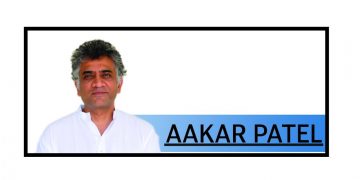Bhubaneswar: In a bid to tackle urban flooding in Bhubaneswar, the city administration has reiterated that all buildings erected on a minimum area of 300 sq metres should install rainwater harvesting system within six months, or else, may face strict action.
It came to light that installation of RWH system remained poor in Bhubaneswar with only a handful of building owners complying with it despite repeated directives issued in this regard.
The Bhubaneswar Development Authority (BDA) and Bhubaneswar Municipal Corporation (BMC) jointly decided to take measures to ensure strict implementation of RWH system in almost all buildings in most vulnerable areas like near Iskcon temple in Nayapalli here which remains flooded during monsoon and causes hardships to commuters. Later, all buildings in low-lying areas in the city must install the facility to ease urban flooding.
The BDA and BMC have decided to deny occupancy certificates to those apartment developers or individual house owners who do not comply with the norms.
“In pursuance of the mandatory provisions of rainwater harvesting prescribed in BDA (Planning & Building Standards) Regulations and Section 302 of Odisha Municipal Corporation Act, 2003, all building owners, developers, residents’ welfare associations, government organisations, schools, colleges, universities, large campuses and others under BMC jurisdiction are hereby directed that rainwater harvesting structures shall be installed within six months’ time from the date of this order,” said an order jointly issued by BDA and BMC.
“Strict enforcement measures shall be taken after the stipulated time is over, under the provisions of Odisha Development Authorities Act, 1982 and Odisha Municipal Corporation Act, 2003. In case of non-compliance of order, appropriate action shall be taken under the provisions of aforesaid Acts and rules/regulations framed there under, which includes but not limited to revocation or permission/ revocation/suspension of occupancy certificate. All government and private owners are requested to treat this as an opportunity to contribute towards making of a climate resilient Bhubaneswar,” the order added.
The civic body further said, “To reduce the impact of urban flooding during heavy rain, it is one of the recognised mitigation measures to construct RWH structures by which rainwater can be collected from the rooftops, paved and unpaved areas, parks/playground/parking areas and stored either for reuse purpose or for recharge of the groundwater table.”
“A team from BDA and BMC will make surprise visits to various buildings in the city to check the violation of the rule. If the authorities find absence of the facility in the buildings, strict action will be taken against the owners,” a planning officer from BDA said.
Mandatory provisions have been prescribed in the BDA (Planning & Building Standards) Regulations since 2008 for effective management of rainwater which includes harvesting, storing, reuse and groundwater-recharging of rainwater within the premises and the RWH structures shall be mandatorily provided in plots, which are more than 300-sq metre area including open spaces. The provisions of the aforesaid regulations shall also be applicable to any building constructed without an approved plan and buildings constructed with deviation of an approved plan.
Inception of RWH plan
Rain harvesting structures are those that help store rainwater for reuse in the same building or for other purposes. In 2015, the state government had decided to implement a new scheme for rooftop rainwater harvesting and groundwater recharge in urban areas of the state with an investment of Rs 100 crore. It was implemented in Bhubaneswar on a pilot basis through installation of rooftop rainwater harvesting systems in buildings to augment groundwater recharge, enhance the water table and improve water quality in the urban areas.







































